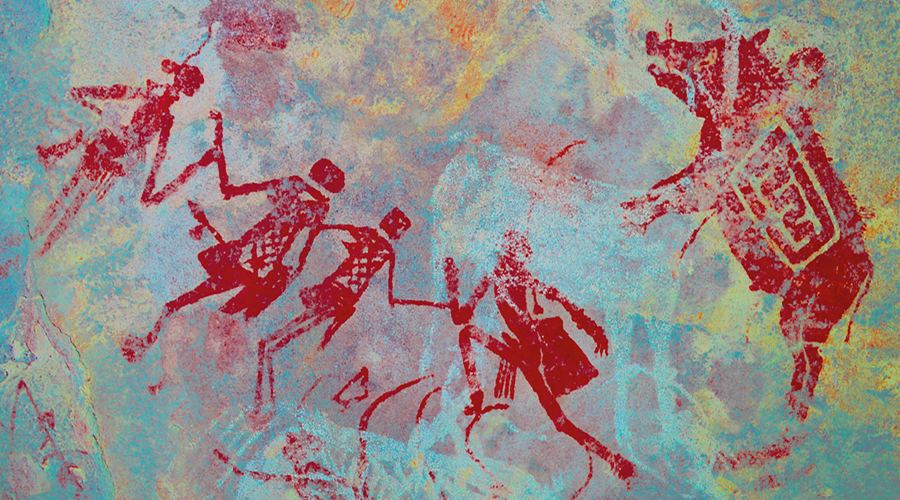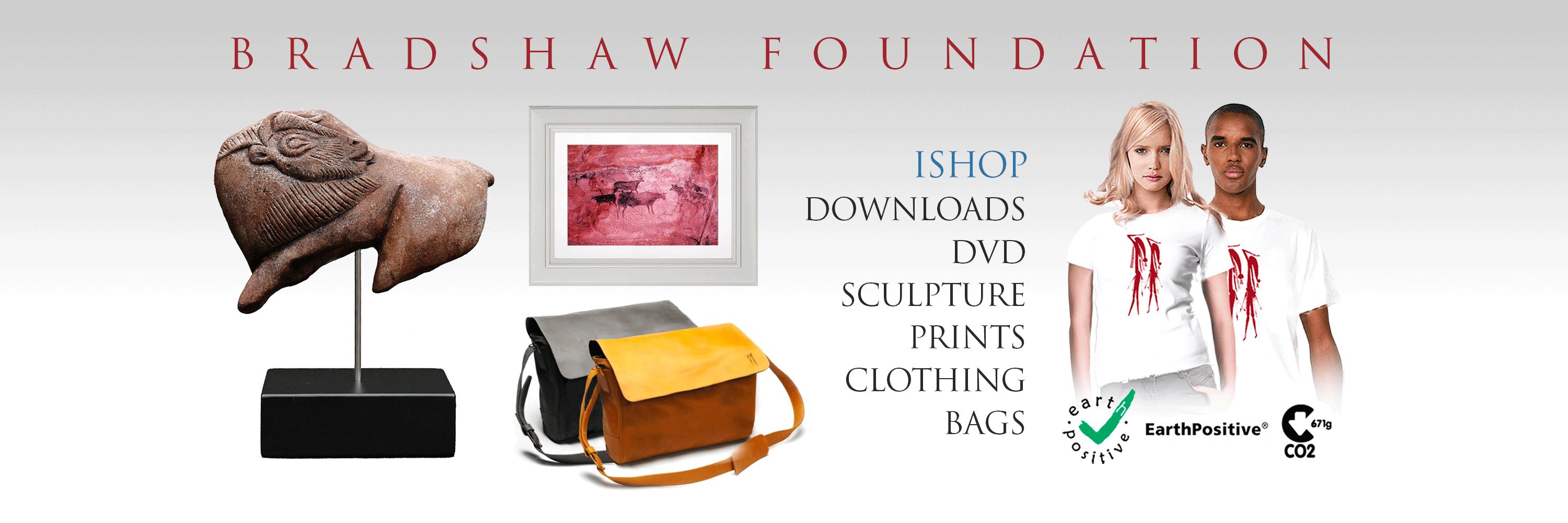


The Artists of /Ui- //aes
Twyfelfontein, Namibia
UNESCO World Heritage Site
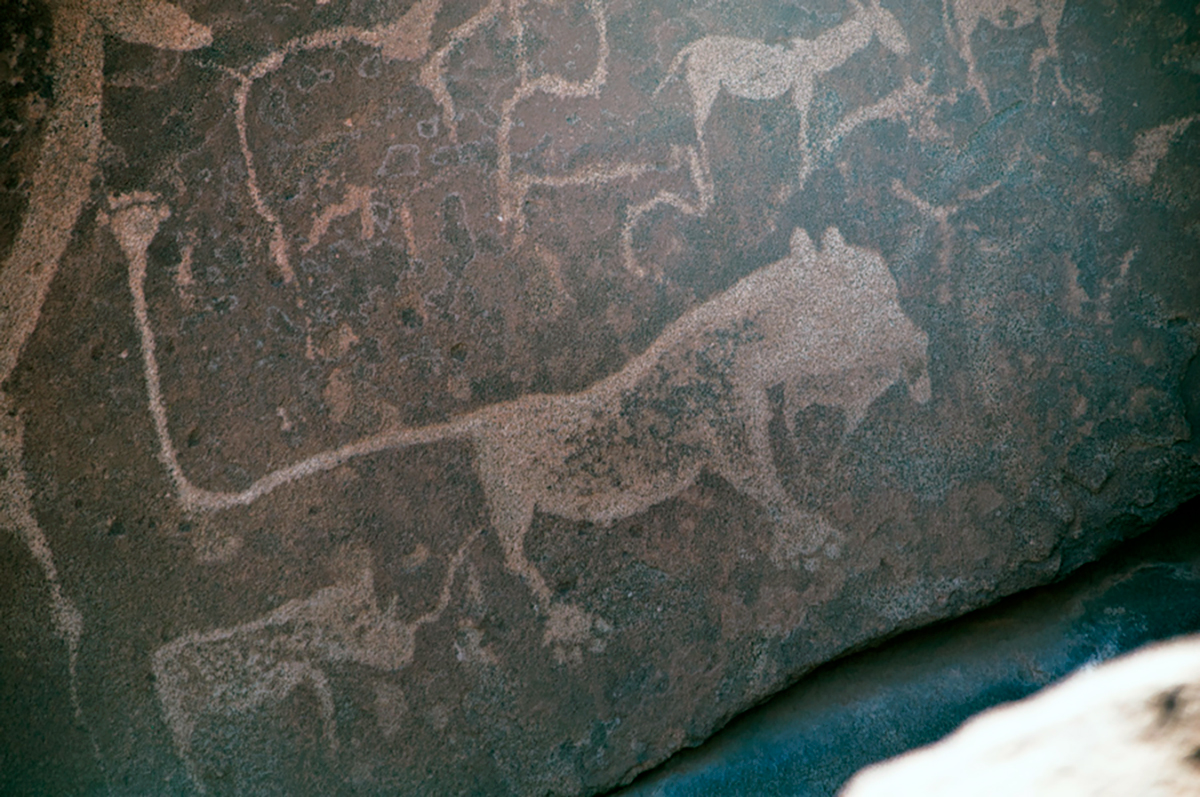
The rock art at Twyfelfontein was probably produced during the dry season, and around 5,000 years ago when the climate was even drier than at present, because the shortage of water and food forced people to congregate near the spring. This then became a time of intense ritual activity.
Rituals helped to strengthen the values and cohesion of the group: they were performed during initiation into adulthood, to heal the sick, to ensure successful hunting, and to make rain.
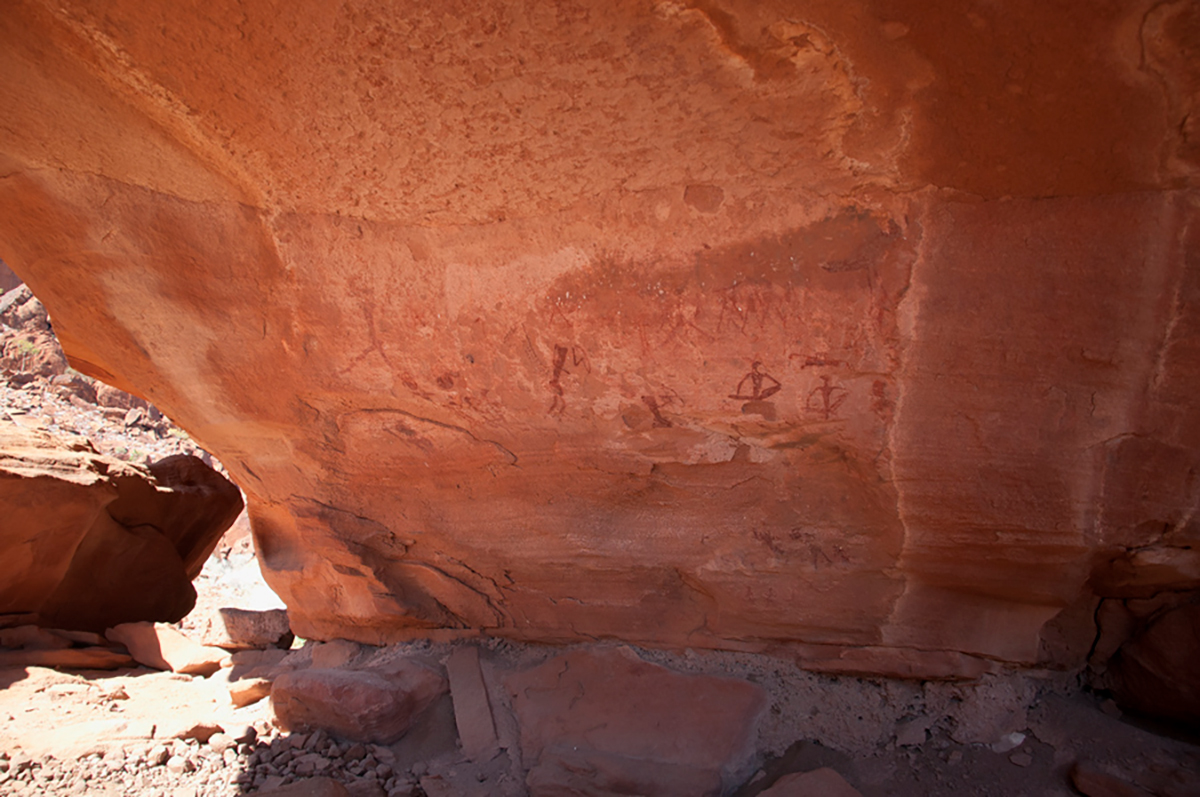
The ritual traditions represented in the rock art of Twyfelfontein saw their greatest flowering during the last 5,000 years; a period of increasing aridity during which hunter-gatherer communities developed and perfected a wide range of economic survival strategies.
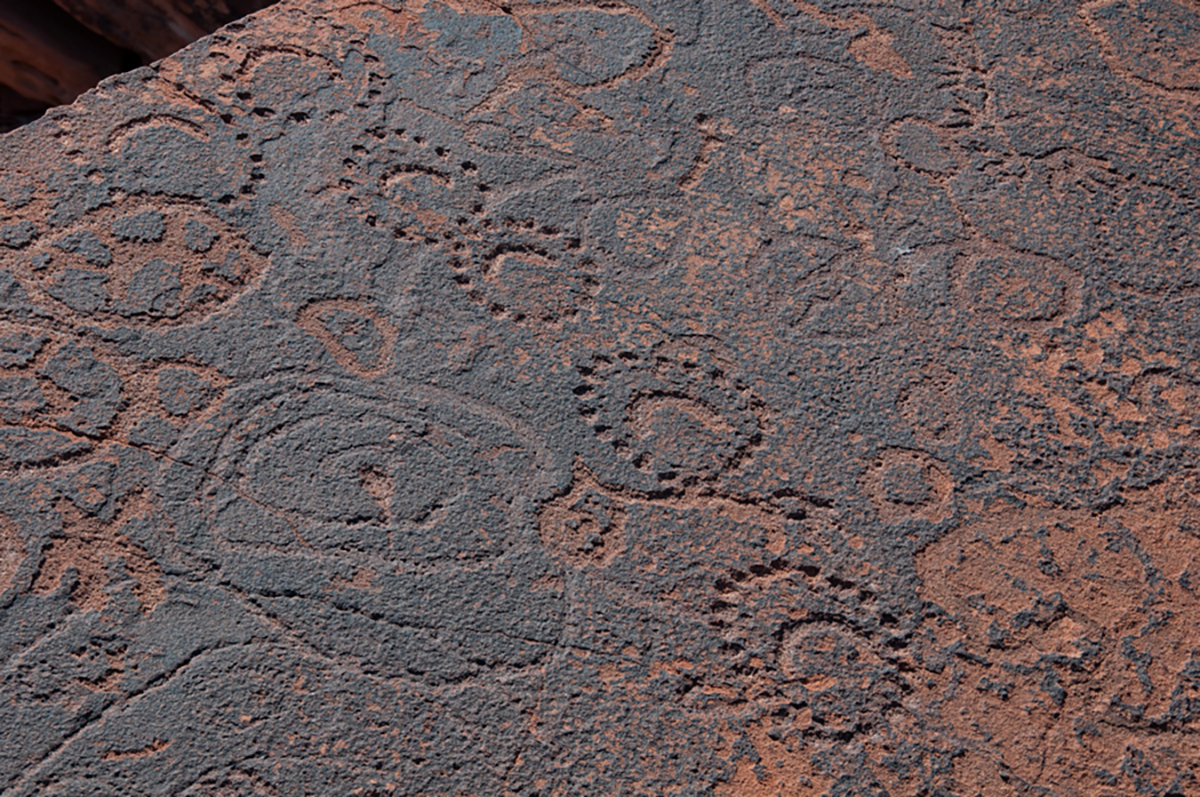
Researchers believe the rock art of Twyfelfontein was the preserve of the medicine people, or shamans, and had 2 functions: as a means to enter the supernatural world - the spirit world - and to record the shaman's experiences in that world.
by Bradshaw Foundation
Monday 03 February 2025
by Bradshaw Foundation
Friday 09 August 2024
by Bradshaw Foundation
Wednesday 24 July 2024
by Bradshaw Foundation
Thursday 04 July 2024
by Bradshaw Foundation
Monday 01 July 2024
by Bradshaw Foundation
Wednesday 20 March 2024
by Bradshaw Foundation
Tuesday 13 February 2024
by Bradshaw Foundation
Tuesday 13 February 2024
by Bradshaw Foundation
Thursday 01 February 2024
by Bradshaw Foundation
Tuesday 28 November 2023
by Bradshaw Foundation
Thursday 23 November 2023
by Bradshaw Foundation
Monday 20 November 2023
by Bradshaw Foundation
Tuesday 31 October 2023
by Bradshaw Foundation
Thursday 26 October 2023
by Bradshaw Foundation
Wednesday 20 September 2023
by Bradshaw Foundation
Monday 17 July 2023
by Bradshaw Foundation
Monday 03 February 2025
by Bradshaw Foundation
Friday 09 August 2024
by Bradshaw Foundation
Wednesday 24 July 2024
by Bradshaw Foundation
Thursday 04 July 2024
by Bradshaw Foundation
Monday 01 July 2024
by Bradshaw Foundation
Wednesday 20 March 2024
by Bradshaw Foundation
Tuesday 13 February 2024
by Bradshaw Foundation
Tuesday 13 February 2024
by Bradshaw Foundation
Thursday 01 February 2024
by Bradshaw Foundation
Tuesday 28 November 2023
by Bradshaw Foundation
Thursday 23 November 2023
by Bradshaw Foundation
Monday 20 November 2023
by Bradshaw Foundation
Tuesday 31 October 2023
by Bradshaw Foundation
Thursday 26 October 2023
by Bradshaw Foundation
Wednesday 20 September 2023
by Bradshaw Foundation
Monday 17 July 2023
Friend of the Foundation
